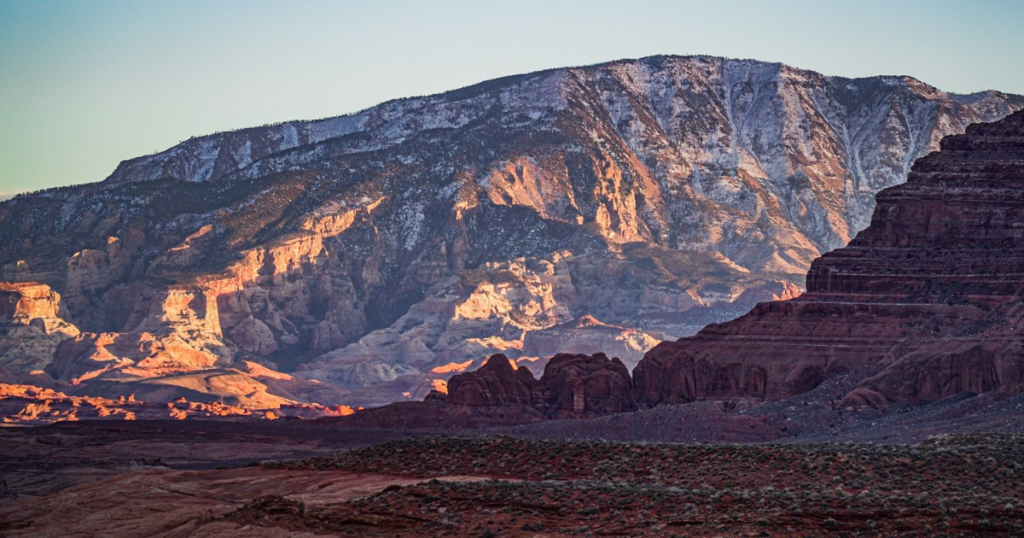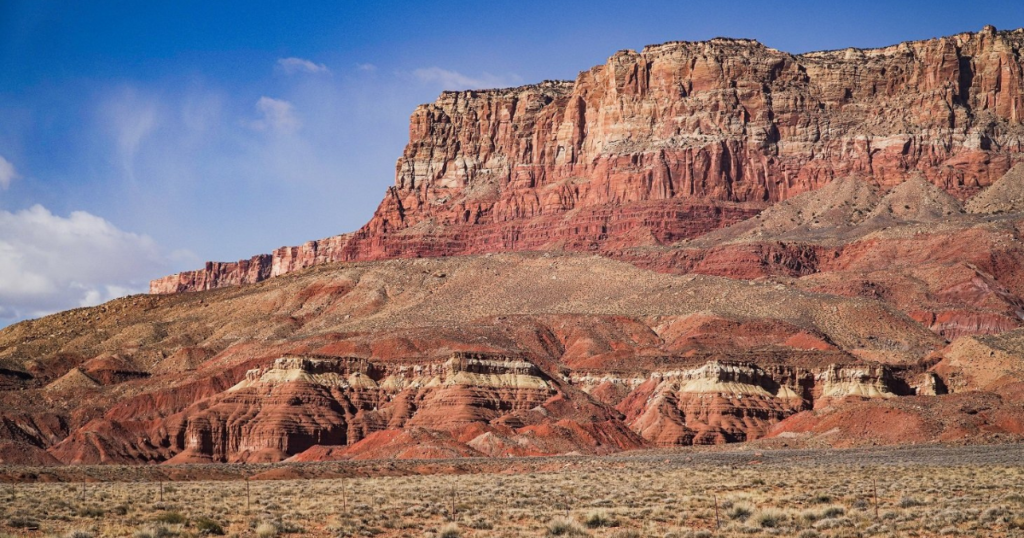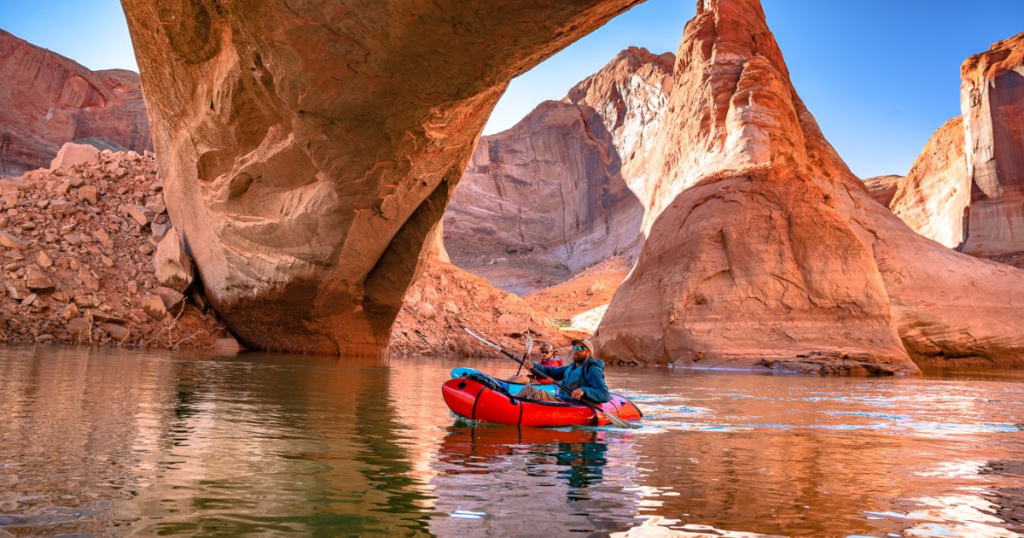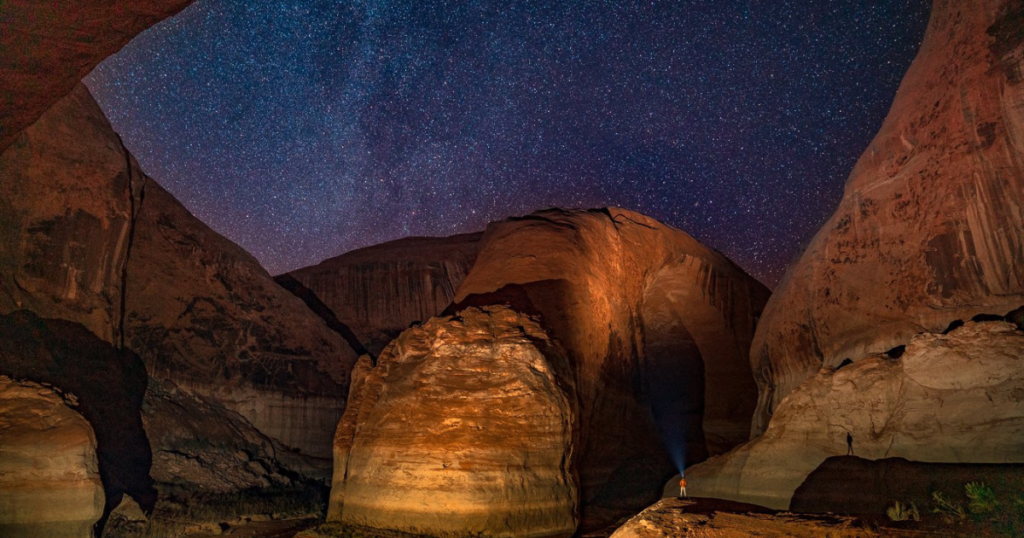The Grand Staircase Escalante region is one of the most beautiful areas in the country. It’s so rugged and remote that was the last area in the lower 48 to be mapped. It also happens to be a stone’s throw from my home.
Background of Lake Powell
Lake Powell, a man-made lake, is a strange place. It is undeniably beautiful and is amazing for recreation. But it also submerged one of the nation’s most beautiful canyon networks, not to mention a vast amount of cultural history (cliff dwellings, petroglyphs, kivas, and more). Many people in the Southwest have a strained relationship with the place.
Newsworthy for more than just conservationists, Lake Powell is now at its lowest point since the dam that flooded the cherished Glen Canyon was constructed in the 60’s. Severe drought, along with some poor planning in the first place, has left Lake Powell’s future in limbo, as water seeps into the sandstone bed, and its massive surface area combined with the hot environment make it a poor water retention area.
With lake levels dropping massively over the last year, it has meant there is a new opportunity for exploring the canyons as they emerge out of the muddy bottom of the lake. In January, I organized an expedition with three of my friends to explore two canyons that lead in and out of Lake Powell. What we experienced was truly incredible! I was so enthralled, I decided to return a month later with Epic Trails in order to film an episode.

Start of the Packrafting Trip
Joined by my friend Jesse Weber and Max Stussi, the Director of Photography for this episode of Epic Trails, we set off for the Escalante area of Utah to film these canyons that, up until a year ago, were under water.
We planned our trip with packrafts in mind, in order to fully explore these canyons. Packrafts are small boats that pack down into a backpack and weigh just a few pounds. They’re incredible tools for adventurers to explore some of the most challenging and inaccessible areas.
The three of us loaded up with four days’ worth of gear, food, and packrafting kit. It doesn’t make for a small pack, and our entry point was a notoriously narrow canyon. These two factors do not play well together.
Day 1 Packrafting through Slot Canyons
On day one, we slogged and scraped and crawled our way through a long slot canyon. It was painfully slow, and a delightful adventure. At many points the canyon was far too narrow to walk through with our packs on our backs. Sometimes we’d hoist them over our heads, or carry them sideways. Once, we even had to break down our packs entirely to get them to fit through the narrowest of spaces.
It was slow and arduous work. But we were happy. It was a proper adventure.

After a full day in the canyon, we had managed to hike only two miles! As night was descending, we finally emerged from the narrowness of the canyon and into the wider box canyon that allowed us to hike, more naturally, through the deep sand.
Day 2 Packrafting was Slow Hiking
Quickly into day two, we learned the canyon would throw another challenge our way; a network of overgrown tamarisk and willow that were nearly impossible to hike through. The canyon was choked out and, yet again, we made impossibly slow progress. We hiked all day, encountering massive canyon walls with the biggest alcoves I’ve ever seen. At no point did the canyon allow for easy passage.
That night we camped under the roof of one of these alcoves, where a bend in the canyon gave us a stunning view.
Day 3 Paddling Around on Lake Powell
On day three, we finally reached the lake. It had retreated and exposed several miles of canyon that were underwater as recently as a few months ago. The only thing that stood in our way was fifty yards of quicksand.
The quicksand provides a surface that feels like you’re hiking atop a waterbed. It’s gelatinous and inconsistent. You can also break the surface tension at any time and sink up to your knees, or worse, without any warning. It’s terrifying to hike upon, and simultaneously a hilarious game.

It turned out that I was the lone hiker to succumb to the quicksand. As we were getting our packrafts onto the water, the sand finally gave way, and I sank up to my thighs in an instant. With thoughts of a watery grave swirling through my head, I felt the nothingness below me. It was impossible to say how deep I would have sunk had I not been able to flop onto my boat. The packraft gave me enough support to extricate myself from the quicksand, but not without the soupy concoction getting all over me.
Jesse, Max, and I paddled through miles of glorious canyons. Even though it was chilly, the sun-filled canyons felt wonderful. We stopped for lunch atop a small rock island that had recently emerged before continuing our journey.
We turned up another canyon, leaving behind the larger channel of Lake Powell. This charming slot canyon holds a unique formation, Gregory Bridge. For decades, the bridge has been submerged. Just last summer, the Salt Lake Tribune published an article musing on if the bridge would, one day, be seen again. Fast forward a few months, and the bridge is now a marvel that paddlers can actually paddle under.
Natural Bridge and Low Water
I saw this exact bridge in January, but the water level was significantly higher. In just a couple weeks, the water had dropped an additional six feet and revealed even more of the fantastic span of rock. The three of us paddled back and forth gawking at the incredible feature. It is one of the most interesting natural features I’ve seen anywhere. To be able to experience it by paddling quietly underneath its massive arching span was a wonder to behold.
That night we camped once again under the protection of a giant alcove. Only a sliver of sky could be seen through the gap in the towering walls.
On our last day, we hiked through a few more miles of narrow gorge before the canyon widened and dried out. At long last, and after significant effort, we toasted to our adventure atop the van.






